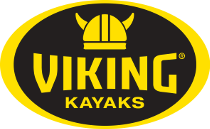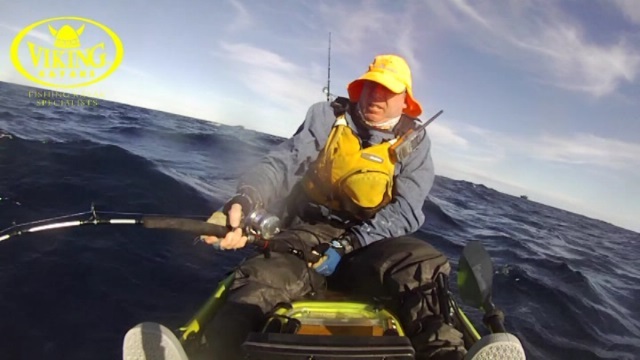Kingfish at 3 King Islands part 1
4:36PM 12th Aug 13
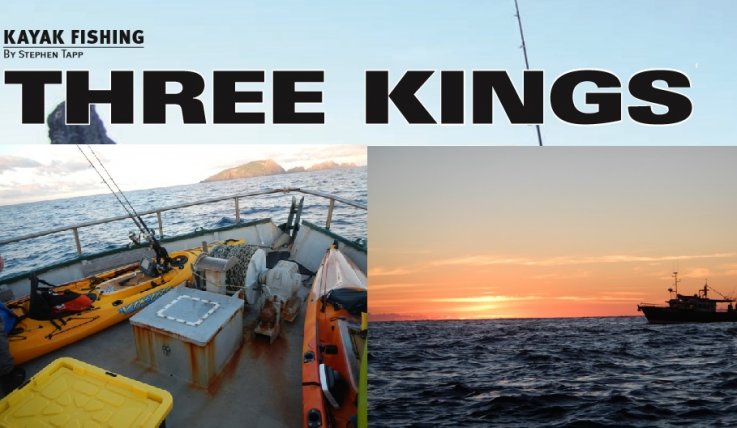
Big blue water, even bigger swells, and then there are the wicked currents to complicate a kayaker’s navigation. One minute you could be relaxing in placid waters, the next you’re contending with standing waves towering over your head as you try to do battle with monster kingfish from your skinny craft. This is the stuff dreams and legends are made of, and finally a small group of us have had the opportunity to sample it.
Kayak anglers Rob, Shelley, Stuart and I were joined by line anglers Neil and Gordon for a mother-ship expedition aboard Demelza, skippered by Tank Barker and Lionel Korach, and crewed by David Barker. Our intention was to target kingfish, try for bass or hapuku, and explore the potential for multi-day, live-aboard trips with kayaks to remote and exotic locations. As with any trip where the skills of skippers such as Tank and Lionel are available, this expedition turned into something far more than the original plan, with king tarakihi, snapper into the 20lb-plus category, and huge trevally complementing the superb kingfish being boated.
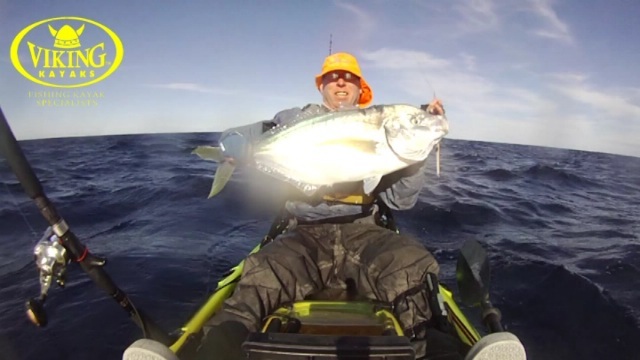
As if that wasn’t enough, an array of other species – ranging from scorpion fish to golden snapper – filled the gaps while taking a rest from the manic jigging action. Only the ’puka and bass proved elusive, although we did have an incident that caused a few chuckles! After each on-the-water session, we had the distinct pleasure of returning to a comfortable mothership with sufficient space to stow the kayaks and re-sort any equipment for the next excursion.
Something else adding immensely to the trip was the excellent food. We burned a lot of calories while dragging in big fish (or being dragged around by them), so to ‘refuel’ without resorting to the usual kayakers’ fare was fantastic (thanks Tank, that lamb roast with mint sauce was an absolute winner).
Weather considerations
The Three Kings are roughly 55km northwest of Cape Rienga, ensuring they’re exposed to conditions from any direction. It goes without saying that additional help is a very, VERY long way away, making any kayak excursion to the area a serious undertaking. It’s not unusual to have swells arriving from several directions, making it difficult – if not impossible – to find shelter. Throw in the need to launch kayaks and safely transfer paddlers aboard (plus recover them back again later in the day) and it becomes critical to get the weather right.
Our first dates at the beginning of April ended up blown out, with mountainous swells making it impossible to get paddlers safely on the water. But fortunately the crew was flexible with dates, so the decision was made to focus on getting to the Kings rather than opting for a secondary ‘Plan B’ destination. It would be a case of watching for a weather window when Demelza was available, and broadcasting a call to action when the two coincided. Even so, when everything came together in early July, it became a mad scramble to return from the Bounty Hunter Tournament in Coromandel and get up to Houhora in time for departure.
Kingfish focus
A prime focus for this later expedition (aside from simply paddling one of the world’s most awesome destinations) had to be the monster hoodlums residing there – after all, who could go to the Three Kings without targeting kingfish. However, we went prepared for anything and everything, so the mountains of gear disappearing over the side of the wharf into Demelza’s cavernous hold had to be seen to be believed. Due to the kingfish focus, the largest volume of gear covered techniques ranging from stick- baiting and poppering to jigging and live baiting.
Unfortunately, not all of it got used, with our targets opting to hang deep on this trip. This meant the surface-action tackle didn’t really get a stretch from the kayaks (though the mother-ship crew managed a couple on stick-baits) and the most successful technique ended up being mechanical jigging. This proved even more successful than live baiting, and even our most spectacular fish fell to various chunks of heavy metal.
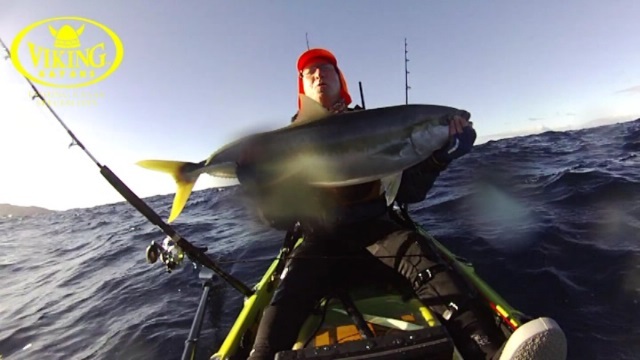
From a purely personal perspective, mechanical jigging for kingfish from a kayak is a technique I’d only lightly delved into, having focused much more on live and dead baits, as well as large soft-plastics in the past. So this expedition provided the ideal opportunity to truly focus on mechanical jigging as a technique, with plenty of fish around to try variations on the theme. There’s nothing like having plenty of action to tweak your technique!
I’ve speed jigged extensively in the past, and while this can be very successful at times, it can also be a hit-and-miss affair, without the consistency mechanical jigging generally offers. The lift-and-drop- as-you-crank system may take a little coordination, but the extra action imparted will get strikes while the classic speeding jig ripping towards the surface only generates follows. Another advantage is the slightly slower retrieve rate of mechanical jigging, which keeps the lure in the bite zone for a little longer (though the frenetic rod wiggling action would have most anglers believing they’re ‘speeding’ their jigs through the water).
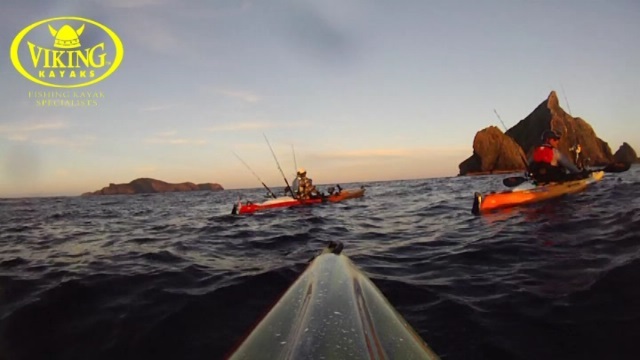
An interesting observation I’ve made when comparing mechanical- and speed-jigging techniques is having fewer fish run me to ground when hooked by mechanical jigging. I have no logical explanation for this, and will continue to keep records, but I’ve now made the same observation in the Bay of Plenty and at the Three Kings. It may have something to do with the rods being using for mechanical jigging taking some of the shock out of the system. In turn, this could be reducing the fish’s agitation until it’s burnt off enough energy, allowing us to control the situation better and keep it away from structure.
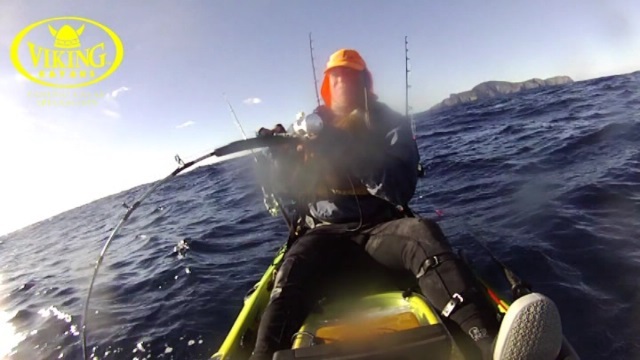
Tackling up
As with all aspects of kayak fishing, this subject attracts widely varying opinions. What follows are observations that have been working for me, and are based on my experiences fishing a wide variety of techniques from kayaks. One of the most significant factors allowing us to fish so successfully is that we’re operating from kayaks and not larger craft, allowing much greater latitude in our tackle, knots and techniques when targeting very big fish.
Part of the reason for this is our kayaks’ ability to track after our quarry without creating a lot of drag. In turn, this allows us to stay over the top of them, providing significant advantages in comparison to fishing from a larger boat. For example, by staying directly on top of the fish, the battle stays near vertical. This enables maximum turning force to be applied to the fish, accompanied by an ability to then keep the pressure on and the fish turned away from the bottom by short stroking. Also, because we’re directly over the fish, it’s harder for them to get us over the edge of structure and to foul the line.
These two factors combine to significantly reduce a fish’s ability to wrap us up and bust us off. Since a kayak tows easily across the water and we’re using relatively ‘bendy’ jig rods, there’s greatly reduced capacity for shock loading in the system. This means there’s relatively low pressure on drags, rigs and knots, making it much more difficult for a fish to bust us off with radical shakes and runs. It also means they react less savagely and seem to be considerably more controllable compared to those I’ve hooked from bigger boats.
The end result is that we’re able to land truly big fish on remarkably light lines. We’re also able to use knots and systems when re-rigging aboard our kayaks that simply wouldn’t be good enough for fishing from larger boats. The advantage to us is greater simplicity with what we need to carry and a reduced need to be proficient at some of the more complex knots ideally suited to targeting big fish. (Next month I’ll take a detailed look at both the simple and the advanced systems that I used successfully at the Three Kings.)
The floating ’puka!
One piece of comedy occurred with the line anglers aboard Demelza fishing not too far away. At the time I’d hooked a nice kingfish that ran deep, but was finally making ground, so it was now about 40 metres below my kayak. With my feet planted on the rudder pedals and my full attention focused on maxing out the gear, I was startled by a splash just metres in front of my bow as a big grey shape burst through the surface!
A moment of shock was followed by the realization that a 30kg-plus ’puka was floating right in front of me with no line attached. A quick VHF call to Demelza had them alongside, and a quick gaff shot secured the ‘catch’. Then began the laughter – who ‘owned’ the fish? Had my king startled it out of its hole, causing it to embolise? Did it belong to one of the line anglers aboard Demelza who’d just dropped a fish? Or did it belong to the gaff man? After all, isn’t possession 9/10ths the law?
